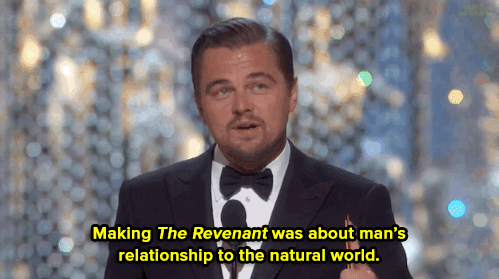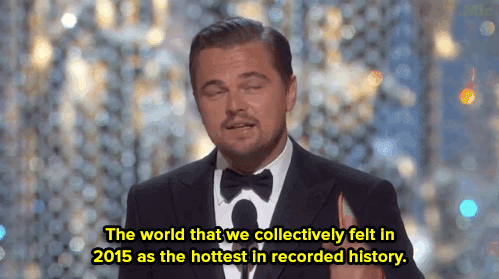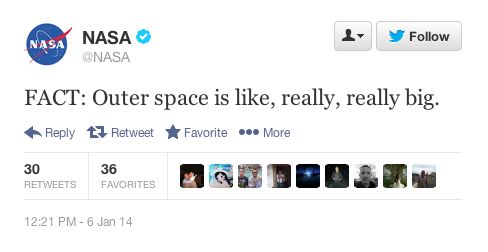Using The Advanced Adaptive Optics System On The Gemini South Telescope, Astronomers Have Imaged A Beautiful

Using the advanced adaptive optics system on the Gemini South telescope, astronomers have imaged a beautiful stellar jewel-box – a tightly packed cluster of stars that is one of the few places in our galaxy where astronomers think stars can actually collide. Stellar collisions are important because they can provide the key to understand the origin of exotic objects that cannot be interpreted in terms of the passive evolution of single stars. read more here credit: Gemini Observatory/AURA
More Posts from Intergalacticnerd and Others


T-2 hours - JASON-3 and Falcon 9 stand tall on the west coast. For the second time in its history, a SpaceX Falcon 9 v1.1 rocket stands at Vandenberg Air Force Base’s SLC-4E ready for launch. The 224 foot tall rocket will carry the joint NASA/NOAA JASON-3 satellite to study Earth’s oceans. Of the 20 flights of the Falcon 9 to date, all but one has occurred from Cape Canaveral’s SLC-40. The inaugural flight of Falcon 9 v1.1, Cassiope in September 2013, was also the debut of the vehicle on the west coast. The JASON-3 mission will see the final v1.1 Falcon 9 performing the vehicle’s second west coast flight. Liftoff will occur in the middle of a 30-second launch window, at 1:42 pm EST (10:42 am PST). NASA TV coverage started at 11 am EST. Watch the launch live here. p/c: SpaceX/NASA

Psychedelic Pluto : New Horizons scientists made this false color image of Pluto using a technique called principal component analysis to highlight the many subtle color differences between Plutos distinct regions.
js

Pluto’s heart
This high-resolution image captured by NASA’s New Horizons spacecraft shows the bright expanse of the western lobe of Pluto’s “heart,” or Sputnik Planitia, which is rich in nitrogen, carbon monoxide and methane ices.
Credit: NASA/JHUAPL/SwRI








“We used to look up at the sky and wonder at our place in the stars. Now we just look down, and worry about our place in the dirt.”










Watch: Leonardo DiCaprio calls to end climate change in Oscar acceptance speech.

M7, Open Star Cluster




This is the coolest outer space animation ever. It shows the Crab Supernova explosion, happened in 1054, and its evolution into the remnant it is now - called the Crab Nebula. Basically a thousand years speeded up into less than a minute.
Modern understanding that the Crab Nebula was created by a supernova, an explosion of a massive supergiant star, dates to 1921 when Carl Otto Lampland announced he had seen changes in its structure. This eventually led to the conclusion that the creation of the Crab Nebula corresponds to the bright SN 1054 supernova recorded by Chinese astronomers in AD 1054. There is also a 13th-century Japanese reference to an appearance of a new or “guest” star in Meigetsuki. It was then so bright it was visible during the daytime for 23 days.
animation credit: ESA/Hubble (M. Kornmesser & L. L. Christensen)


Southern Cross by Carlos Fairbairn
js
-
 masqueoff reblogged this · 5 years ago
masqueoff reblogged this · 5 years ago -
 chaosofjellyfishes reblogged this · 7 years ago
chaosofjellyfishes reblogged this · 7 years ago -
 chaosofjellyfishes liked this · 7 years ago
chaosofjellyfishes liked this · 7 years ago -
 cdnsongbirdme liked this · 8 years ago
cdnsongbirdme liked this · 8 years ago -
 astriferously reblogged this · 8 years ago
astriferously reblogged this · 8 years ago -
 pityandcigarettes reblogged this · 8 years ago
pityandcigarettes reblogged this · 8 years ago -
 pityandcigarettes liked this · 8 years ago
pityandcigarettes liked this · 8 years ago -
 stickyheart-remade liked this · 8 years ago
stickyheart-remade liked this · 8 years ago -
 thesleepybeansprince reblogged this · 8 years ago
thesleepybeansprince reblogged this · 8 years ago -
 ohhwormo reblogged this · 8 years ago
ohhwormo reblogged this · 8 years ago -
 wolfshank liked this · 8 years ago
wolfshank liked this · 8 years ago -
 eternaltiare reblogged this · 9 years ago
eternaltiare reblogged this · 9 years ago -
 cosmicmazapan liked this · 9 years ago
cosmicmazapan liked this · 9 years ago -
 petritaxhami-blog liked this · 9 years ago
petritaxhami-blog liked this · 9 years ago -
 smeagoltrahald reblogged this · 9 years ago
smeagoltrahald reblogged this · 9 years ago -
 smeagoltrahald liked this · 9 years ago
smeagoltrahald liked this · 9 years ago -
 cat-tato reblogged this · 9 years ago
cat-tato reblogged this · 9 years ago -
 cat-tato liked this · 9 years ago
cat-tato liked this · 9 years ago -
 bekmorkt reblogged this · 9 years ago
bekmorkt reblogged this · 9 years ago -
 dugar-saddy reblogged this · 9 years ago
dugar-saddy reblogged this · 9 years ago -
 haarryy reblogged this · 9 years ago
haarryy reblogged this · 9 years ago -
 katraoyne liked this · 9 years ago
katraoyne liked this · 9 years ago -
 themperorsnewclothes reblogged this · 9 years ago
themperorsnewclothes reblogged this · 9 years ago -
 spaceprincessjade-blog liked this · 9 years ago
spaceprincessjade-blog liked this · 9 years ago -
 fruitoftheshroom liked this · 9 years ago
fruitoftheshroom liked this · 9 years ago -
 beyondearth10-blog liked this · 9 years ago
beyondearth10-blog liked this · 9 years ago
"Astronomy compels the soul to look upwards and leads us from this world to another." - Plato
147 posts
